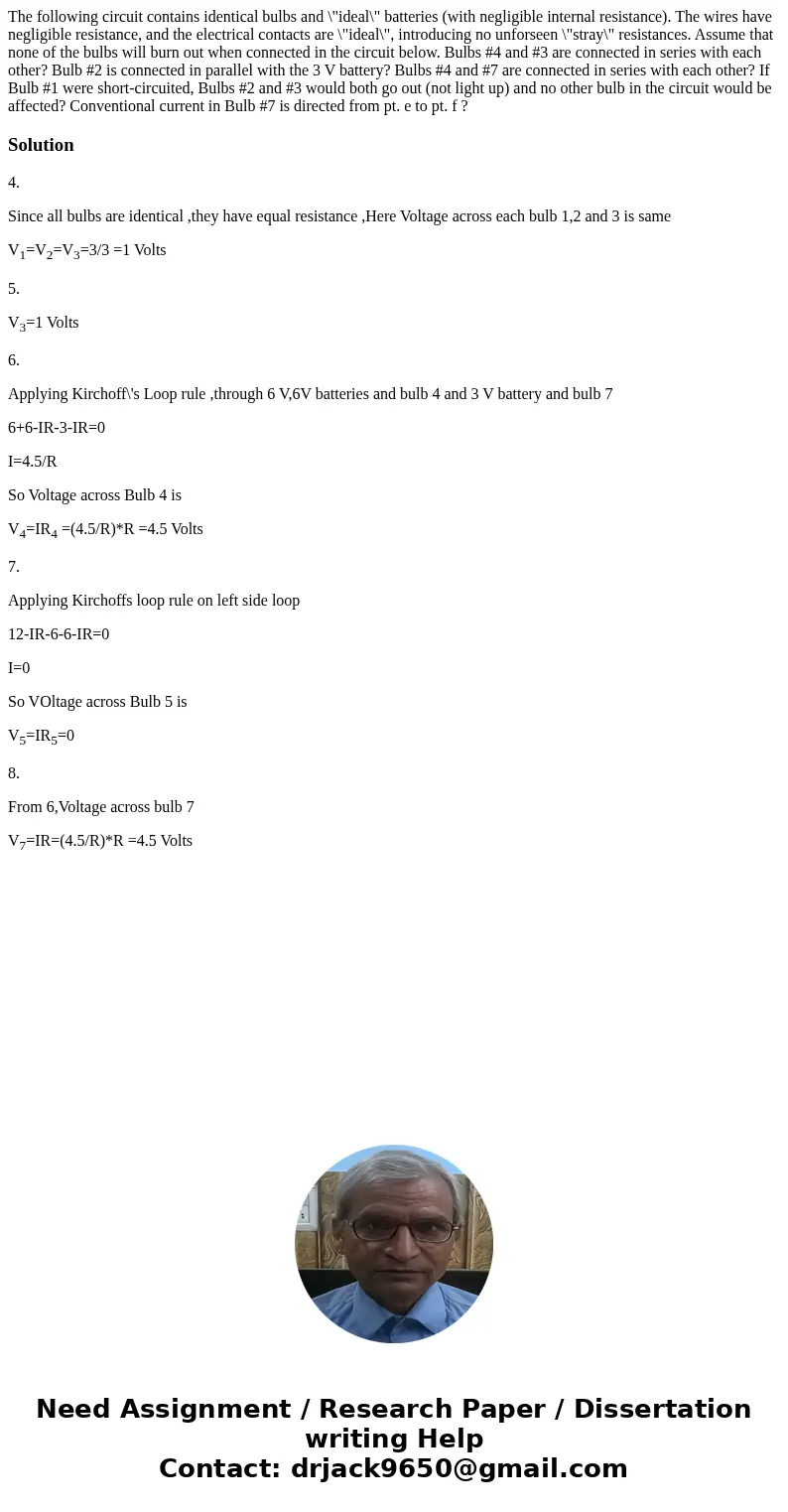The following circuit contains identical bulbs and ideal bat
The following circuit contains identical bulbs and \"ideal\" batteries (with negligible internal resistance). The wires have negligible resistance, and the electrical contacts are \"ideal\", introducing no unforseen \"stray\" resistances. Assume that none of the bulbs will burn out when connected in the circuit below. Bulbs #4 and #3 are connected in series with each other? Bulb #2 is connected in parallel with the 3 V battery? Bulbs #4 and #7 are connected in series with each other? If Bulb #1 were short-circuited, Bulbs #2 and #3 would both go out (not light up) and no other bulb in the circuit would be affected? Conventional current in Bulb #7 is directed from pt. e to pt. f ? 
Solution
4.
Since all bulbs are identical ,they have equal resistance ,Here Voltage across each bulb 1,2 and 3 is same
V1=V2=V3=3/3 =1 Volts
5.
V3=1 Volts
6.
Applying Kirchoff\'s Loop rule ,through 6 V,6V batteries and bulb 4 and 3 V battery and bulb 7
6+6-IR-3-IR=0
I=4.5/R
So Voltage across Bulb 4 is
V4=IR4 =(4.5/R)*R =4.5 Volts
7.
Applying Kirchoffs loop rule on left side loop
12-IR-6-6-IR=0
I=0
So VOltage across Bulb 5 is
V5=IR5=0
8.
From 6,Voltage across bulb 7
V7=IR=(4.5/R)*R =4.5 Volts

 Homework Sourse
Homework Sourse